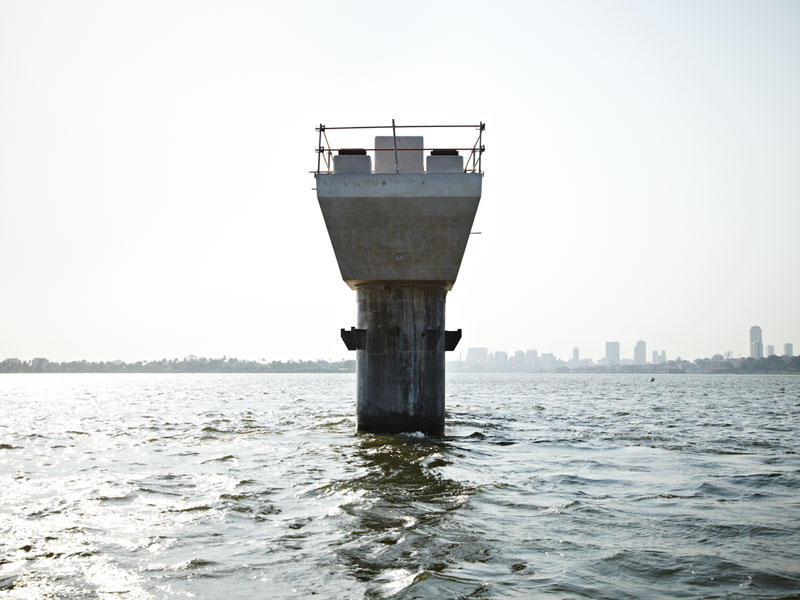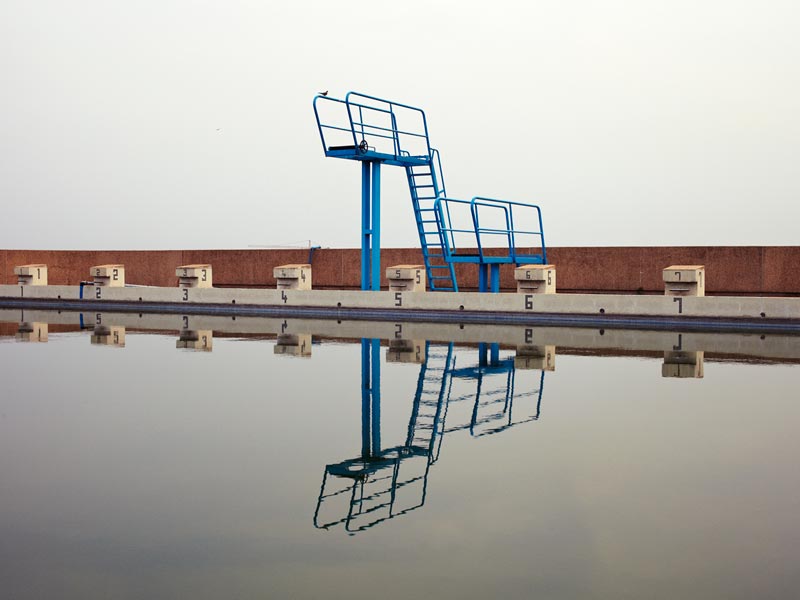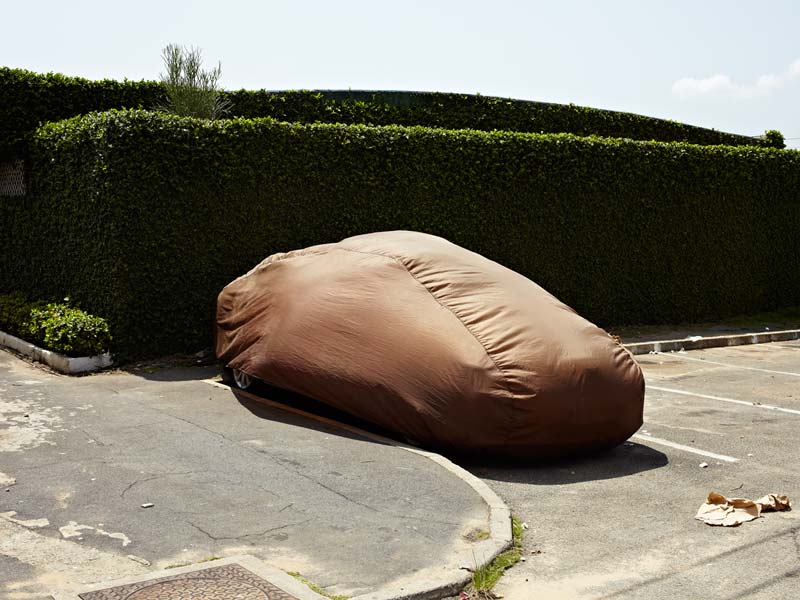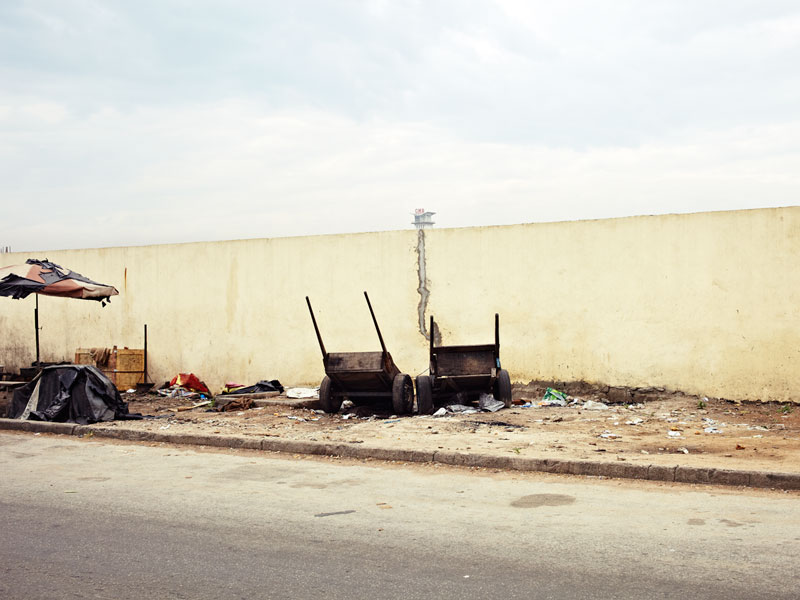The Past is a Foreign Country
PUBLISHED BY HAVERFORD COLLEGE
TEXTS BY BRENDAN WATTENBERG, EMMANUEL IDUMA, SUSANNA D. WING
95 PAGES, SOFT COVER, 165 X 240 MM
2015
The Past is a Foreign Country marks Gbré’s first solo show in North America. Commissioned as a site-specific installation for the Cantor Fitzgerald Gallery at Haverford College, the exhibition includes selections of photographs from series Gbré created between 2009 and 2015 in West Africa and France, whose disparate subjects are united by a methodical, often distanced perspective on architecture and landscape as forms of documentary evidence.
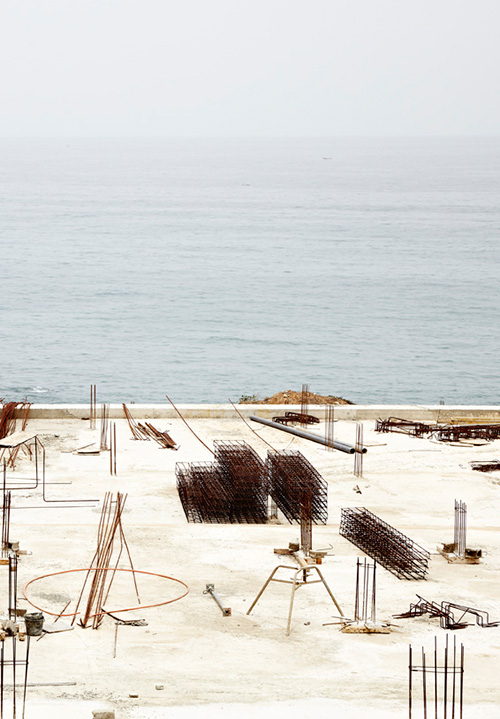
In Conversation with François-Xavier Gbré, Emmanuel Iduma and Brendan Wattenberg
At the heart of a conversation about photographs is the reference to place and time. The work of François-Xavier Gbré, depicting the outer and inner life of landscape, particularly engages the history of places as they are made and remade. Sometimes the landscapes appear to contain only a simulacre, yet they suggest something more than the imitation of the passage of time — a memorial to the objects and the subjects who enact their personalities in front of monuments, incomplete buildings, dilapidated paper factories, and surfaces. The dialogue below is an instructive document on the work of Gbré. “Everything is connected,” he says in one response. The connections, indeed, can be made between the experiences prompting his work in African cities, his training in European cities, his relocation to Abidjan, and even his peculiar narrative of an urban culture being calibrated with alacritous speed. Such connections allow for a truly idiosyncratic reading of his work in Bamako, Abidjan, Dakar, Porto-Novo, France, and Israel. We read idiosyncratically to discover what is characteristic, what sets things apart. For Gbré, a convenient starting point would be to see his work as visionary. By this I do not only suggest his work is “ahead of its time,” but, also, that it sees the timely, the imminently profound.
— Emmanuel Iduma
Download PDF/PDF à télécharger
Iduma: In Abidjan, Bamako, Porto-Novo, Lomé, and Dakar, as well as in France, you have taken photographs of interiors and surfaces. This distinguishes you from many landscape photographers. Why is interiority important to you, even though you photograph mainly landscapes?
Gbré: The exteriors tell you about the architect, the “sponsor,” the period, the environment, or the region where the building is. The interiors tell you more about who is living inside. In a way, you are more in the present even if you are taking photographs of things that look old. Interiority is more personal, more intimate. Interiors are secret boxes.
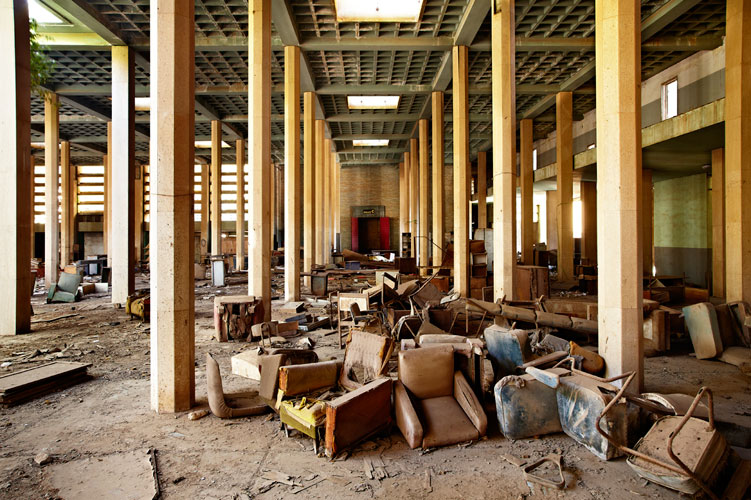
Wattenberg: In your most recent work in Abidjan, you’re exploring seemingly futuristic forms of architecture. There is new infrastructure under construction, like the bridge or the social housing. In contrast to your photographs from Bamako, which are preoccupied with the past as embodied in former structures, in Abidjan, it’s really about the immediacy of today and tomorrow. The surfaces are much more polished.
Gbré: Of course, I look at the future. These new structures are part of the present, but part of the future, too. The bridge is a very positive addition to the city. We suffered so much while waiting for this bridge and with traffic jams, but now everybody is very happy with it. It has solved many problems. And I’m very happy that I got this photograph of the pillar of the bridge standing as a monument in the middle of the water (plate 34).
